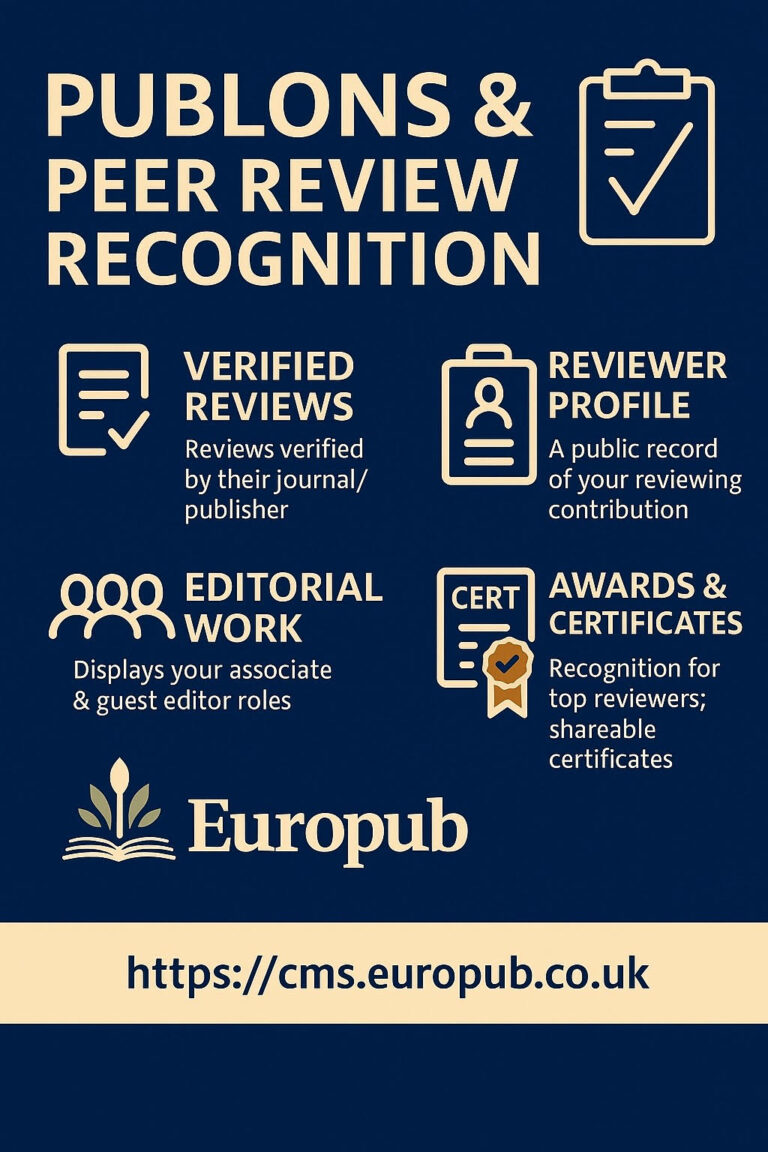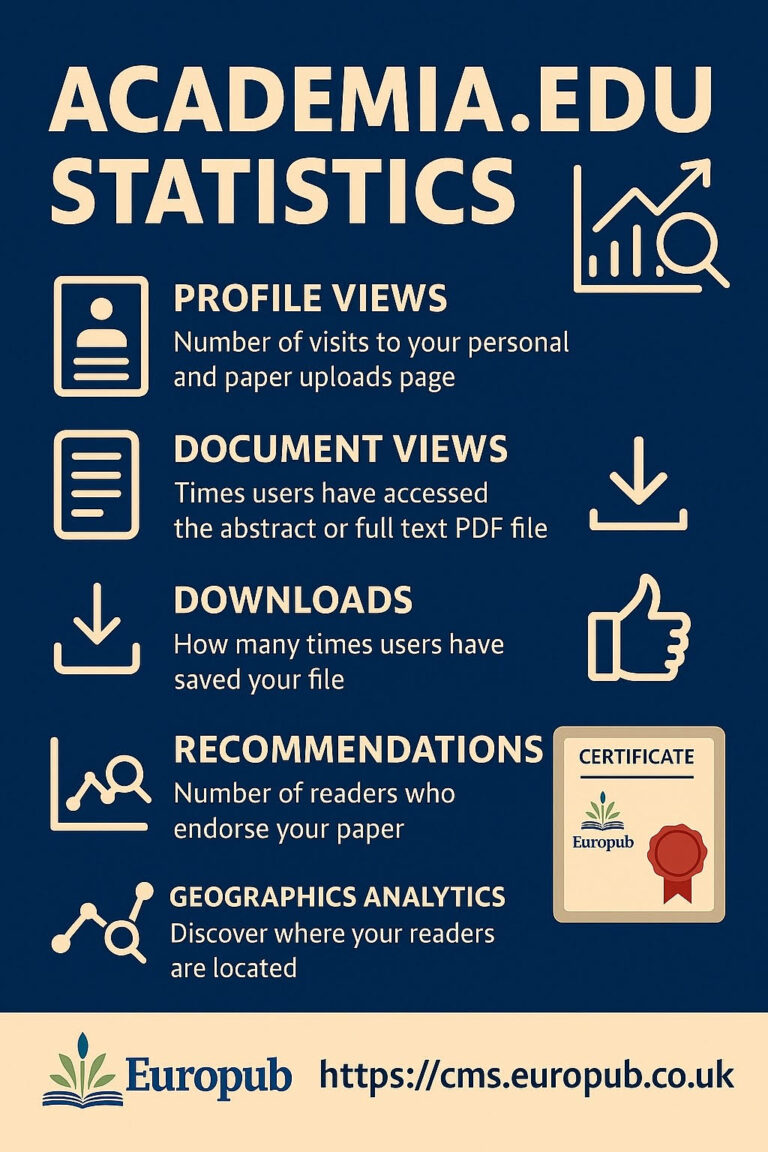
 What Are Altmetrics?
What Are Altmetrics?
Altmetrics (alternative metrics) are indicators that measure the online visibility, social reach, and attention that a research output receives across multiple platforms beyond traditional citations.
They capture how, where, and by whom research is discussed, shared, and used in the digital environment.
 Key Components of Altmetrics
Key Components of Altmetrics
- Social Media Mentions — Tweets, retweets, posts, and discussions on platforms like X (Twitter), Facebook, and LinkedIn.
- News & Blogs — Mentions or coverage in scientific blogs, public media, or specialized online portals.
- Policy Citations — References in governmental or institutional policy documents, showing societal impact.
- Mendeley Readers — Number of users who saved the article to read or reference later.
- Wikipedia Mentions — Inclusion in Wikipedia entries indicates educational or general public relevance.
- Patent Citations — Research cited in patent filings shows commercial or technological relevance.
- YouTube & Podcasts — Mentions or citations in multimedia educational content.
- Article Views & Downloads — Measures the direct attention and reach of the paper on hosting platforms.
- Community Engagement — Reader comments, ResearchGate interactions, or academic discussions.
- Altmetric Attention Score (AAS) — A composite number reflecting the total online activity around the article.
 Why Altmetrics Matter
Why Altmetrics Matter
- Speed: Captures attention in real time (hours or days after publication).
- Breadth: Measures engagement beyond academia — in public, media, and policy.
- Diversity: Includes various content types: datasets, code, posters, preprints, etc.
- Impact Evidence: Shows social or cultural influence, not just scholarly citations.
- Research Communication: Encourages open science and broader visibility.
 Altmetrics vs Traditional Citations
Altmetrics vs Traditional Citations
| Feature | Traditional Metrics (Citations) | Altmetrics |
|---|---|---|
| Focus | Academic impact | Public & digital impact |
| Speed | Slow (months to years) | Instant (real-time) |
| Scope | Scholarly community | Global audience |
| Sources | Indexed databases (Scopus, WoS) | Social, media, policy, repositories |
| Format | Articles only | Articles, datasets, preprints, software, blogs |
 Tools & Platforms for Tracking Altmetrics
Tools & Platforms for Tracking Altmetrics
- Altmetric.com – Industry leader providing colorful “donut” badges and AAS scores.
- PlumX Metrics (Elsevier) – Tracks usage, captures, mentions, and citations via Scopus.
- Dimensions by Digital Science – Combines citations and altmetrics in one interface.
- ResearchGate / Academia.edu – Basic engagement statistics for authors.
- ImpactStory / OurResearch.org – Open-access tools for tracking public engagement.
- Mendeley Stats – Tracks readers and citations for authors.
- Figshare & Zenodo – Integrates altmetrics for datasets and open-access materials.
 Integrating Altmetrics into Research Evaluation
Integrating Altmetrics into Research Evaluation
- Display Altmetric badges on journal websites and author profiles.
- Use data in annual reports, grant proposals, and institutional dashboards.
- Complement—not replace—traditional indicators (Impact Factor, H-index).
- Showcase societal reach in open science and outreach initiatives.
 Ethical Considerations
Ethical Considerations
- Avoid “gaming” or artificially inflating metrics through spam posts.
- Ensure transparency by using verified identifiers (DOI, ORCID).
- Respect privacy policies when tracking mentions or engagements.
 Related Links & Resources
Related Links & Resources
 FAQ – Frequently Asked Questions
FAQ – Frequently Asked Questions
1. What does an Altmetric Attention Score (AAS) mean?
It’s a weighted score reflecting how much and where your paper has been mentioned — e.g., news outlets weigh more than tweets.
2. Does a higher Altmetric score mean a better paper?
Not necessarily — it shows visibility and engagement, not academic quality.
3. Are Altmetrics recognized by funding agencies?
Increasingly yes — many funding bodies consider online impact as part of outreach and dissemination.
4. Can datasets or preprints have Altmetrics?
Yes, any object with a DOI (article, dataset, code, preprint) can be tracked.
5. How fast do Altmetrics appear?
Often within 24 hours of online publication.
6. How can I improve my paper’s Altmetric score?
Share it on social media, blogs, academic networks, and link it with your ORCID.
7. Do journals display Altmetric badges?
Many leading publishers (Springer Nature, Wiley, Elsevier) already embed badges on article pages.
8. Are Altmetrics free?
Platforms like Altmetric.com provide free limited access, but detailed analytics require institutional subscription.
9. What’s the relationship between Altmetrics and Impact Factor?
They complement each other — Altmetrics measure attention, IF measures citation impact.
10. Can Altmetrics predict citations?
Sometimes yes — early attention can correlate with future citations, but not always.




